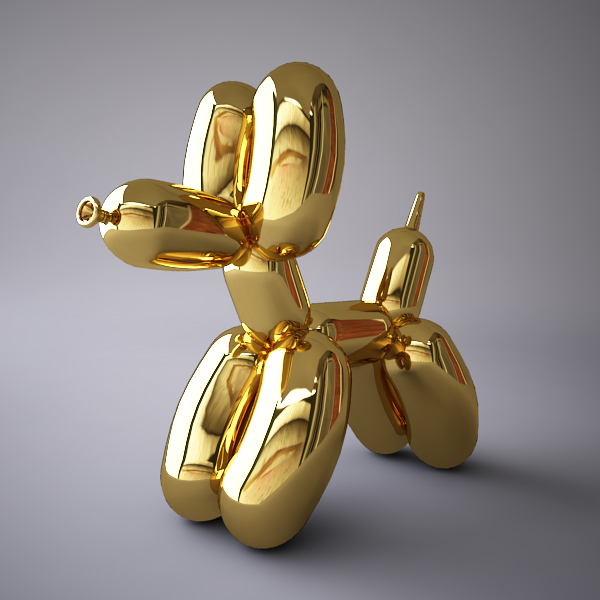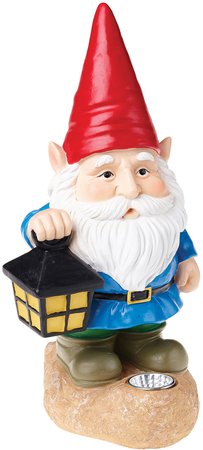You would not like to have this dwarf on your balcony, I am sure.
But do you listen to pop-music? Pop can be regarded as music-kitsch; the idea of kitsch is not exclusive to paintings and other derivatives of fine arts (just as the idea of pop is not limited to music.) But you have perhaps found some popular music worth you attention – and should we always be so serious, anyway?
A line?
The line between kitsch and real art is not easy to draw, and I am not sure if kitsch is always bad. Nonetheless, to avoid kitsch has been a major drive in the history of art for a couple of hundred years.
There are basically two simple ways by which you can safeguard against kitsch. You can make things ugly and you can make things difficult. I shall come back to those, but let us first see how one artist (and others like him) has tried to escape the problem by “embracing” it.
Pre-emptive kitsch
When Jeff Koons made this kind of ridiculous dog it was not in order to surprise his children with a funny decoration for a birthday party. If he had done that, you might have congratulated him with some originality (and for being a caring parent). But as we know, the “dog” was exhibited as an artwork and sold for a high price.

I find it hard to say who is the most ridiculous, the artist making the thing or the person paying a large sum for it. I cannot see any thought-provoking irony here. I cannot see how this piece of “obvious-kitsch” helps us to better understand (or enjoy) our lives as humans. You may, of course, have a different opinion on this. Perhaps you can explain to me why Koons piece is interesting and/or helpful, or in any other way good? As long as you have not, however, I will take the liberty of holding the Koon thing (and similar) for contended, basically empty, art.
As a key to understanding the difference between deeply surprising art and surprisingly shallow, I will suggest looking for insult (German Häm). I would say it is an insult to your judgment and good taste (and your will to develop it) to display Koon’s dog as art. If you can identify a slight feeling of being insulted, I believe you are on the right track. Next you can check if there may be some reason to suspect that Artist & Co are driven by an urge to insult you. They might e. g. be overly rich and basically tired of life (though not quite aware of it). They may even be envious of those who are not.
Ugly

Kitsch always tries to please you in one way or another. As ugliness by definition disgusts rather than pleases, it is opposite to kitsch. Those sculptures are grotesque. Let us hope that the artist has a deeper meaning to it, but in any case, I guess he safely escapes kitsch?
Or – can anything be seen as kitsch today? “Grotesque, ha, ha, you are not the first artist who try to make us step back in disgust! We see what you are trying to do, but we have seen it before, and we refuse to be moved!” Identifying kitsch may be a matter of context.
Difficult
“You should make things as simple as possible, but not simpler than that.” Well said, in my opinion, by Albert Einstein.
So why did classical music become more complicated and less tonal throughout the 19th and 20th century? Because Bach, Beethoven and Mozart were played too often? With the industrial revolution pianos and people able to play them became less scarce. Or do you know of a more “progressive” explanation why composers like Richard Strauss (the German late Romantic) and Russians like Prokofiev and Stravinsky step by step moved away from tonality and simplicity (and Schoenberg!) each time provoking protest? Do you like so-called contemporary music?
But on the other hand: Has life in fact become more difficult? – following Einstein artists have to make difficult art?
Soft and aggressive kitsch

This fortnight I highlight the Italian baroque painter Bartolomé Esteban Murillo. He lived from 1617 to 1682, long before the word kitsch was even invented (about 1870). But you can recognize kitschy tendences in his images, including his self-portrait (even in himself). There is something unreal about kitsch and “too much” is often a feature.

Perhaps there is too much beauty in Murillo’s painting of Virgin Mary and angel.
But “too much” can be regulated and we sometimes need a break from the hard work of developing judgment and taste. I suggest you enjoy your (soft) kitsch like you would enjoy tobacco and good food – not too much!
Those who offer an unreal replacement for the real thing, however, don’t always ask how much you would like to have. This is the aggressive kitsch. It does not offer you a break from the hard work, it tries to undermine and destroy the judgement and the good taste that you have. The pre-emptive kitsch discussed above is an advanced variety of this approach. Less advanced, but nonetheless effective, would be the many kitschy images offered in advertisements and in other persuasion (seduction). The Soviet propaganda art was kitsch and so was the Nazi. Watch out for to-day’s relatives!
- See also Two Kinds of Happiness, Form, Acting and authenticity

Schreibe einen Kommentar